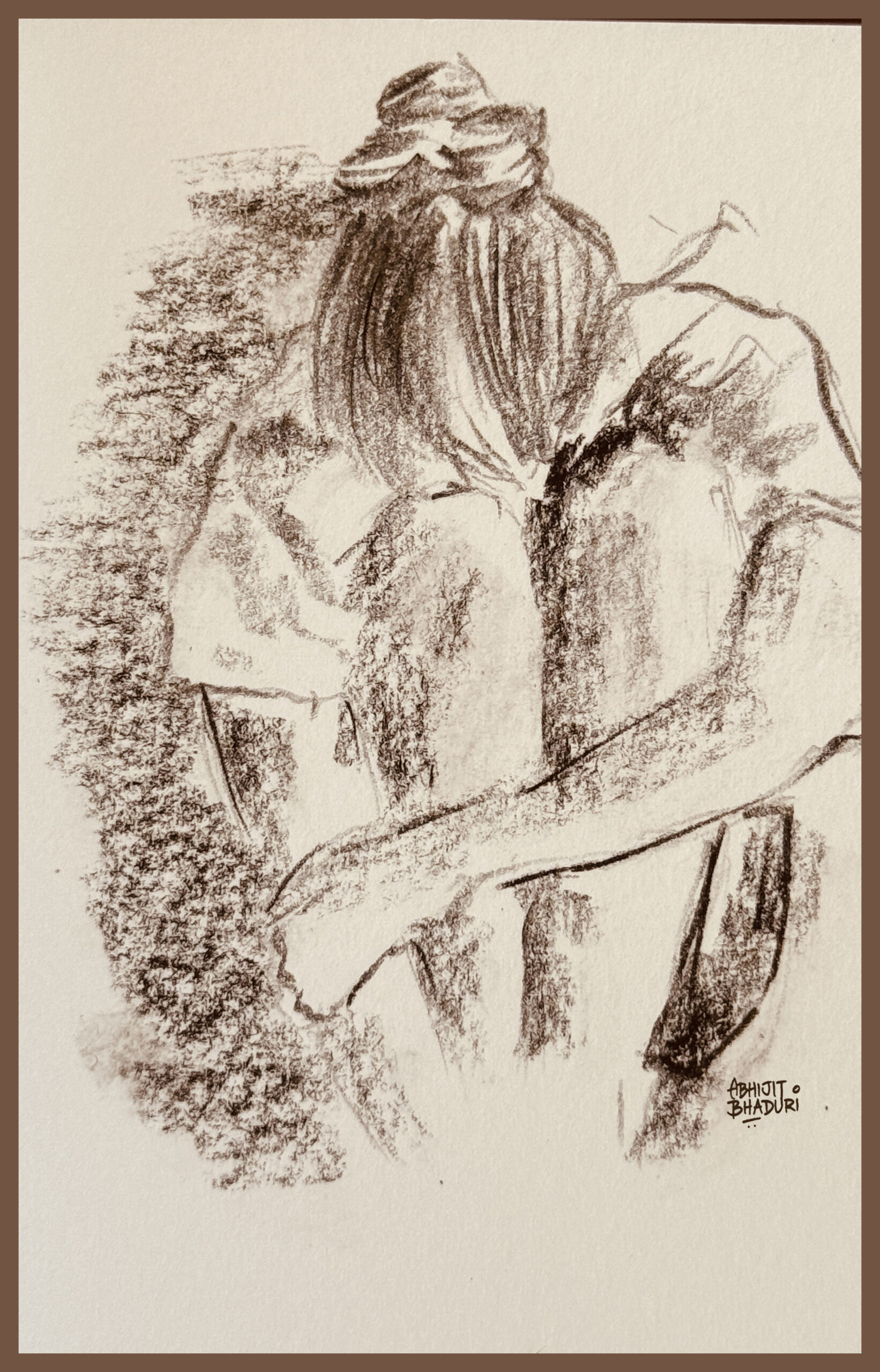
Grief isn’t just what we feel when someone dies. It’s the ache of missed opportunities, the sting of status lost, the weight of meaning stripped away when our work world shifts without warning. In the workplace, grief wears many faces—and most go unrecognized.
ये दुख काहे खत्म नहीं होता बे…
In one of the most iconic scenes of Masaan, the protagonist grieves his loss and wonders why his grief just refuses to end.
The Many Faces of Grief
Grief at work doesn’t always begin with death. It’s triggered by a loss of status or identity—a senior leader sidelined after a reorganization, or a respected expert passed over for a younger hire. It shows up in the loneliness of leadership, where a CEO confesses he has no one to talk to. It appears in the betrayal of office politics, where promises of promotions or projects vanish without explanation.
There’s also the grief of economic insecurity—small business owners who lost everything in the pandemic or employees who see headlines of layoffs with no clarity about their future. Even missed life milestones—weddings on Zoom, first jobs started in isolation, students missing out on campus life—are losses that linger.
Grief also strikes when values are shaken. Employees feel conflicted when an organization or a leader they’ve admired makes an unethical choice. These subtle, social, and systemic losses leave emotional scars—rarely acknowledged but deeply felt.
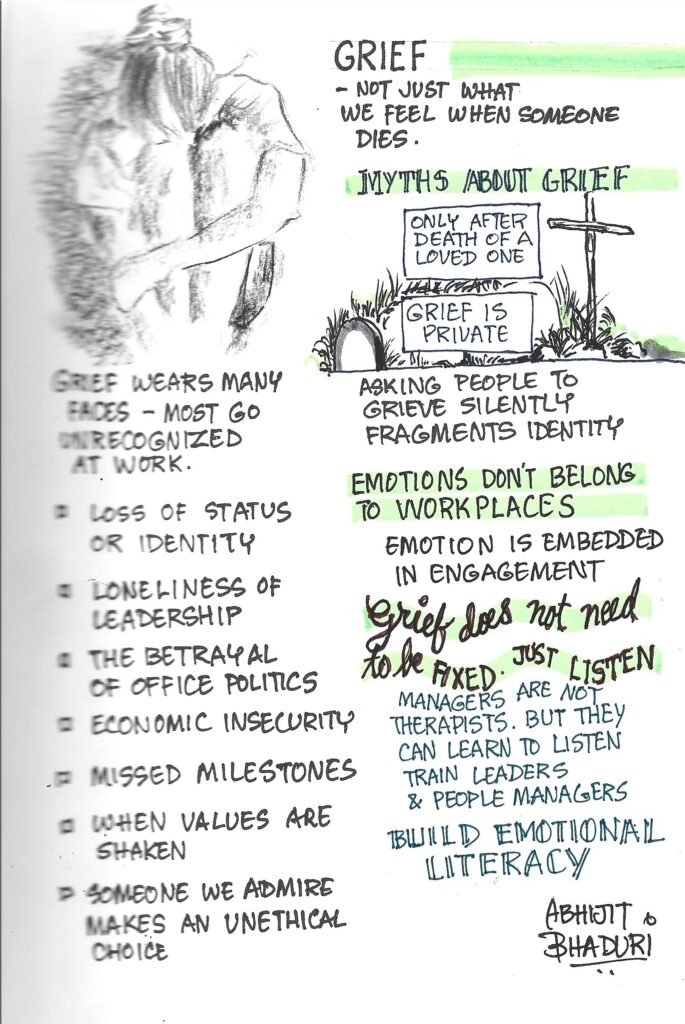
The Myths That Hide Grief
Grief remains invisible at work because of deeply rooted myths:
- Myth 1: Grief only follows death. In reality, grief can stem from any meaningful loss—identity, belonging, or routine.
- Myth 2: Grief is private. But we bring our whole selves to work. To ask people to grieve silently is to ask them to fragment their identity.
- Myth 3: Time heals all wounds. Time may soften grief, but without recognition, it festers and resurfaces in unhealthy ways.
- Myth 4: Emotions are unprofessional. Yet organizations seek “passionate” employees—emotion is embedded in engagement.
- Myth 5: If we acknowledge grief, it will open floodgates. In truth, acknowledgment offers relief. It doesn’t require fixing—only listening.
These myths prevent workplaces from seeing grief, let alone supporting it.
What Organizations Can Do
1. Normalize the Conversation
Talk about grief beyond bereavement. Include it in leadership training and onboarding. Use real examples—lost promotions, disrupted careers, ethical dilemmas. This breaks the taboo and builds emotional literacy.
2. Create Psychological Safety
When people feel safe, they speak up. Psychological safety means knowing one can be vulnerable without judgment. Leaders must ask, “How are you—really?” and be ready to hold the silence that follows.
3. Train Managers to Respond, Not Solve
Managers aren’t therapists, but they can learn to listen. Organizations like Wipro have trained “Mitr” counselors—peer listeners who support quietly and consistently. It’s a low-cost, high-impact model.
Grief doesn’t have to be dramatic to matter. Left unspoken, it affects morale, productivity, and trust. But when acknowledged, it creates space for healing, belonging, and resilience.
It’s time for organizations to see grief not as a weakness to be hidden—but as a human truth to be honored.
I wrote a chapter in this book. It was about Grief. I want to put the full version of it here, in case you wish to read it. Let me know.
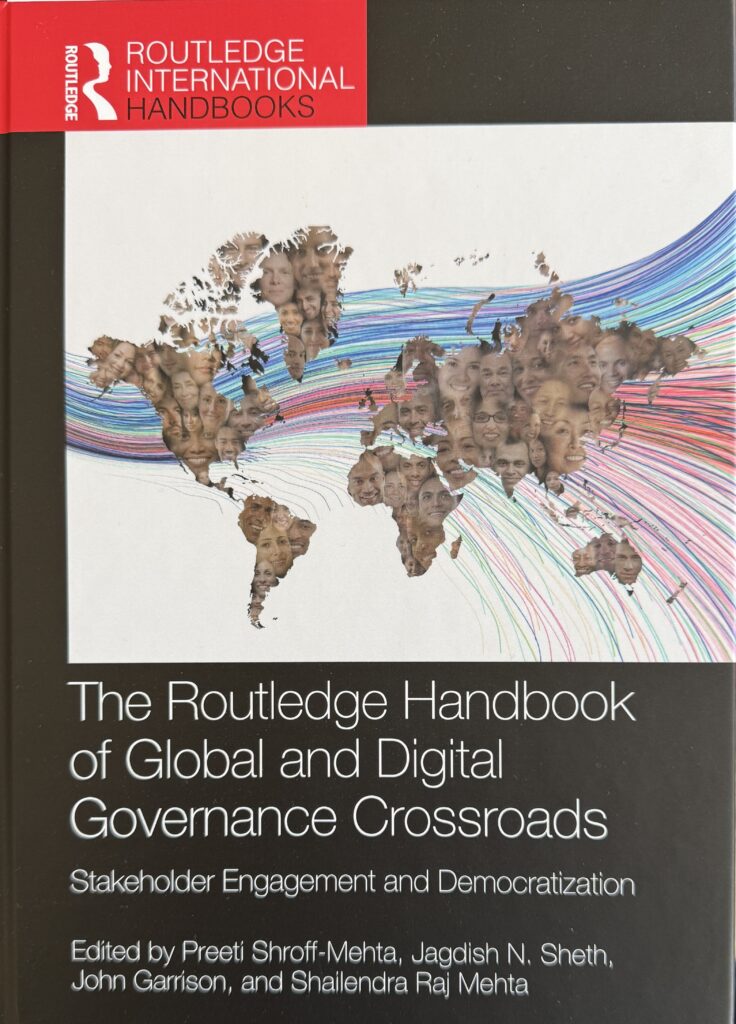

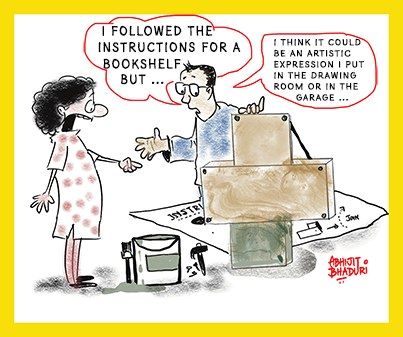
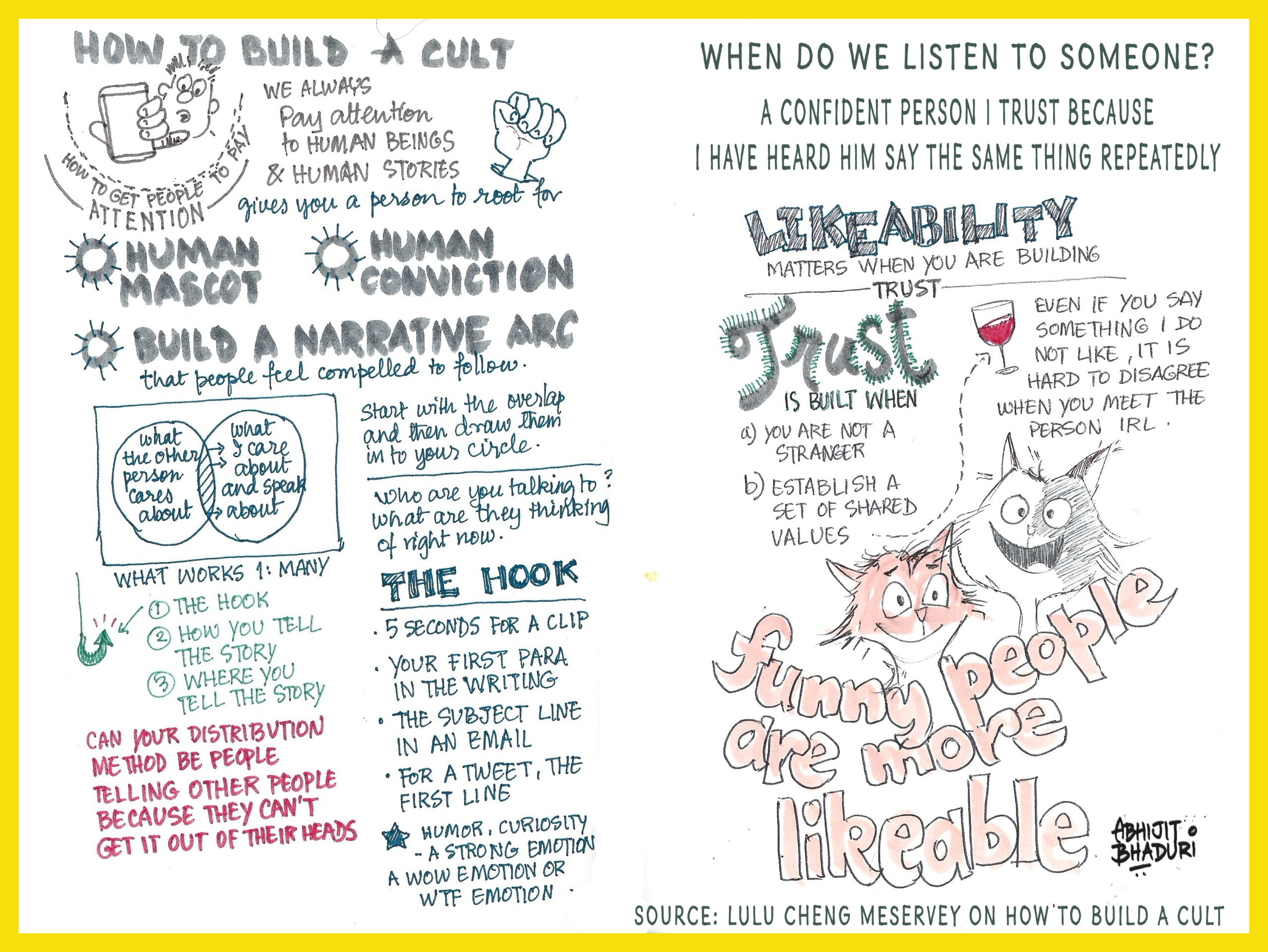
Leave a Reply